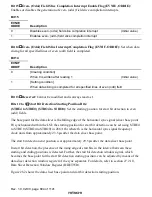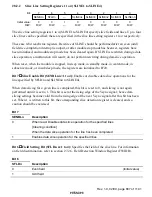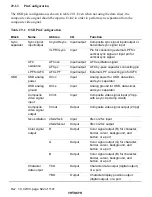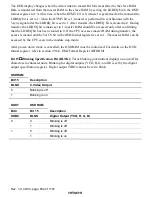
Rev. 1.0, 02/00, page 819 of 1141
Section 29 On-Screen Display (OSD)
29.1
Overview
OSD (on-screen display) is a function for superimposing arbitrary characters or display patterns on
a TV image signal.
The display screen consists of up to 32 characters
×
12 rows; a single character consists of 12 dots
×
18 lines. Up to 384 different character types can be registered, and each character display can be
connected to the top, bottom, right, and left of another character. Hence in addition to
alphanumerics and kanji characters, graphics can also be displayed.
Text display and superimposed display are supported, and there are composite video signal output
and digital outputs.
There are a wealth of ornamental features as well, including blinking display, borders, cursors,
halftone display, buttons, and enlarged display.
Analog functions (video amp, analog switch) peripheral to OSD are also incorporated. The sync
separator has an AFC circuit built-in, for stable display.
OSD can be used in data encoding in the U.S. closed caption format.
29.1.1
Features
•
Screen configuration: 32 characters
×
12 rows
•
Character size: 12 dots
×
18 lines
•
Character types: 384 types*
1
•
Supports text display and superimposed display
•
Display enlargement: 1
×
1, 2
×
2 (line units, vertical
×
horizontal)
•
Blinking: Can be set in single character units
Blinking period can be set to either 32/fV or 64/fV (for the entire screen)
(fV: vertical sync signal frequency)
•
Border function: Single-dot borders in each of eight directions
Border color:
In text mode, white or black, and brightness fixed
In superimposed mode, black, and brightness fixed
•
Supported TV formats: NTSC, PAL, SECAM
•
Display position: Horizontal and vertical direction leading positions are set, and line intervals
can be set
•
Digital outputs: R, G, B; output of YCO (character data bit strings) and YBO (character
display positions)
















































